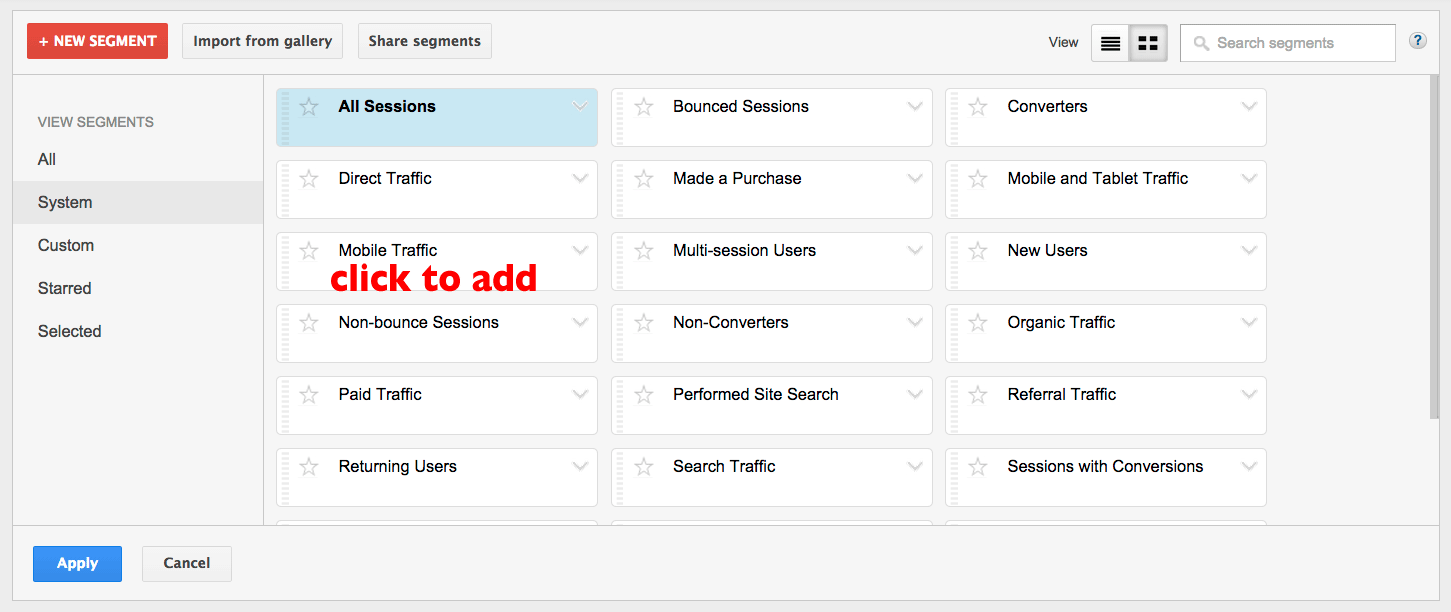4 minute read. Don’t assume that all your visitors are the same – examine each ‘segment’ of your audience to gain insights. Lesson 4 of 5.
Here’s something that should be really obvious: each visitor to your site is slightly different: they have different needs, preferences and behaviours.
Someone coming to your site from a Google search will behave differently from someone who visits your site in response to an email newsletter you have sent them.
A visitor returning to your site for the sixth time this month will behave differently than a visitor who is seeing your site for the first time.
Users of mobile phones will need different things than users with a 24 inch monitor.
You get the idea.
Each of these audiences will convert on your website in different ways and for slightly different reasons.
The power of Google Analytics is that it allows you to focus in on the behaviour of each of these visitor segments individually. You start to see your audience’s specific needs and stop seeing them as one undifferentiated mass.
And this helps you see how (and understand why) each of them converts on your website.
Once you start thinking about your audience as individual segments that have different needs when they visit your website, you can start to make decisions about what to offer them in a much more powerful way.
Default Segments: the hidden gem of Google Analytics
One of the most powerful features of Google Analytics, is hidden in plain view on the reporting interface. It’s the ‘+ Add Segment’ button and you can find it on report pages under the Reporting tab. It’s a little faded out, but it’s very important!

As soon as you click on the Advanced Segments button, you are presented with more than a dozen audience segments that Google Analytics automatically tracks for you.
You can instantly convert all your Google analytics reports to focus on one or more segments such as:
- New visitors
- Returning visitors
- Search traffic
- Direct traffic
- Visits with Conversions
- Mobile traffic
and more. See for yourself below.

Choose a segment (up to four) by clicking on the segment name then clicking on the blue ‘Apply’ and you’re done.
Now all your reports in Google Analytics are focusing only on the segments you have chosen. Every report will use only those segments until you remove those segments by clicking on the downward arrow beside each segment and choosing ‘Remove’.

With three clicks you can focus in on how people on mobile devices use your site or examine the behaviour of visitors who convert. This gives you far more insights into how to improve your website than simply looking at all your visitors as one homogeneous group.
You can focus the entire Google Analytics reporting power on the audience you have questions about – making it a much more powerful tool for generating insights.
Custom Segments in Google Analytics. Whoah.
So far we have looked at the default segments that Google Analytics provides out of the box. But there is also a ‘+ Create New Segment’ button under the Segments arrow, where you can create your own custom segments to track very specific types of visitors to your site.
With a little bit of tinkering, you can create a custom segment to track almost any visitor segment to your site.
- Visitors who convert on a particular goal (like downloading a specific report)
- Return visitors from Sao Paulo who use a particular screen resolution to view your website on a particular day
- Visitors from a specific email campaign you sent out (and tracked with campaign tracking)
The possibilities are limited only by your imagination and your skill in creating custom segments. But again, as with all things Google Analytics, you need to focus on useful, actionable information that will help you improve your online results.
So in the next session we are going to demonstrate how you can combine three key concepts we have learned – conversion tracking, campaign tracking and custom segments – to take our use of Google Analytics to the next level.
Do you have questions about this lesson?
Ask them in the comments below.
Did you find this page via Twitter or a link from a friend?
Click here to get the rest of these lessons sent to you via email. Of course you can unsubscribe at any time with just a couple of clicks.
